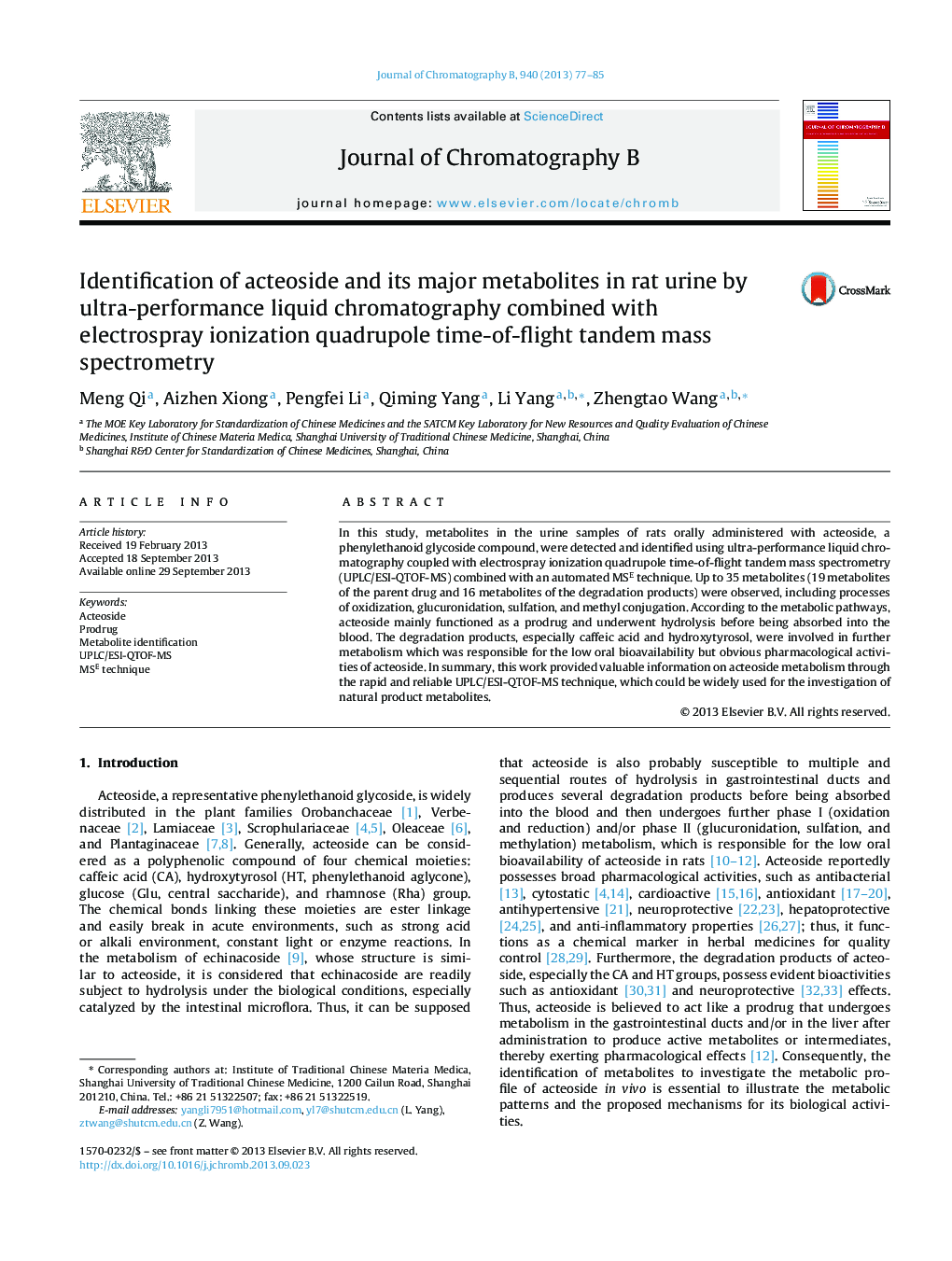| Article ID | Journal | Published Year | Pages | File Type |
|---|---|---|---|---|
| 1213028 | Journal of Chromatography B | 2013 | 9 Pages |
•Identification of 35 metabolites in rat urine after acteoside administration.•Acteoside metabolized as a prodrug and underwent further metabolism.•Acteoside metabolized into caffeic acid and hydroxytyrosol derivers.•The metabolism patterns explain the low bioavailability of acteoside.
In this study, metabolites in the urine samples of rats orally administered with acteoside, a phenylethanoid glycoside compound, were detected and identified using ultra-performance liquid chromatography coupled with electrospray ionization quadrupole time-of-flight tandem mass spectrometry (UPLC/ESI-QTOF-MS) combined with an automated MSE technique. Up to 35 metabolites (19 metabolites of the parent drug and 16 metabolites of the degradation products) were observed, including processes of oxidization, glucuronidation, sulfation, and methyl conjugation. According to the metabolic pathways, acteoside mainly functioned as a prodrug and underwent hydrolysis before being absorbed into the blood. The degradation products, especially caffeic acid and hydroxytyrosol, were involved in further metabolism which was responsible for the low oral bioavailability but obvious pharmacological activities of acteoside. In summary, this work provided valuable information on acteoside metabolism through the rapid and reliable UPLC/ESI-QTOF-MS technique, which could be widely used for the investigation of natural product metabolites.
